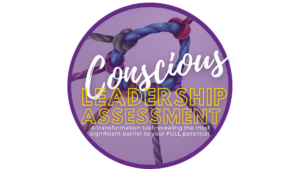Attracting and retaining colleagues is one thing, but having them engaged is the difference between going to a party and dancing at the party. Engaging employees is the secret sauce that fuels productivity, creativity, and loyalty. So, how can you create an environment where employees are fully invested in their work and excited to contribute?
By Suzanne F. Stevens, Conscious Leadership and Social Contribution Cultivator, Founder, YouMeWe Social Impact Group Inc., Part of the Nobody Wants to Work Series.
Engaging Employees Authentically
 I had the honor of interviewing Angela Dick (Founder and CEO of Transman, South Africa – on YouMeWe Amplified), a conscious leader renowned for engaging employees and sparking their creativity. Angela believed in the power of communication and implemented a unique initiative called “Monday Morning Motivational Moments.” Every Monday, she would share her thought of the week, whether it was an observation about the country, an inspiring company story, or a personal insight. By sharing her thoughts openly, Angela made herself accessible to all colleagues, transcending hierarchical boundaries.
I had the honor of interviewing Angela Dick (Founder and CEO of Transman, South Africa – on YouMeWe Amplified), a conscious leader renowned for engaging employees and sparking their creativity. Angela believed in the power of communication and implemented a unique initiative called “Monday Morning Motivational Moments.” Every Monday, she would share her thought of the week, whether it was an observation about the country, an inspiring company story, or a personal insight. By sharing her thoughts openly, Angela made herself accessible to all colleagues, transcending hierarchical boundaries.
Angela’s genuine openness and willingness to listen attracted innovative ideas from all corners of the organization, even from unsung heroes such as the cleaning team. Her approachability paid off. One of the cleaning team suggested a sustainable cleaning solution that improved efficiency and aligned with the company’s commitment to environmental responsibility. This simple act of authentically engaging with employees at all levels sparked a wave of creativity, bringing fresh ideas and perspectives to the forefront.
Fostering open communication for employee engagement
 Another remarkable Conscious Leader, Gita Goven, Founder & CEO of ARG Design, also from South Africa, recognized that employees thrive when they are empowered to work together towards common goals. To foster this spirit of teamwork, she initiated “morning tea-time” with her team.
Another remarkable Conscious Leader, Gita Goven, Founder & CEO of ARG Design, also from South Africa, recognized that employees thrive when they are empowered to work together towards common goals. To foster this spirit of teamwork, she initiated “morning tea-time” with her team.
Every day, for 20 minutes, the team would gather to share what they were working on, the challenges they faced, and the opportunities they envisioned. Although they worked on different projects, they didn’t operate in silos; instead, they embraced collaboration and supported one another through their collective expertise. These daily gatherings promoted open communication and fostered a deep sense of camaraderie and trust within the team.
By providing a dedicated space for sharing, Gita cultivated an environment where employees felt valued, heard, and supported. The morning tea-time sessions became a breeding ground for cross-functional innovation as ideas from different departments intersected and sparked fresh approaches to problem-solving.
Through their respective initiatives, Angela and Gita exemplified the power of employee engagement. They transformed their workplaces into thriving hubs of motivation and innovation by creating opportunities for open dialogue, connection, and collaboration.
Their stories remind us that authentic leadership goes beyond traditional hierarchies. It lies in engaging employees at all levels, valuing their input, and creating a culture of trust and inclusion. By embracing these principles, we can fuel success and unleash the untapped potential within our organizations.
Let’s delve into five key strategies for cultivating employee engagement that you can apply to your organization.
1. Ongoing scheduled dialogue.
To engage employees effectively, make ongoing scheduled dialogue a part of your company’s culture. Encourage open communication, embrace feedback from all sources, and measure clear goals. By doing so, you create an atmosphere that fosters growth and ensures everyone feels heard.
2. Engaging in Decision-making
Collecting perspectives in decision-making is critical. Allow your employees to debate and share their insights authentically. When stakeholders feel their views are genuinely heard and considered, they are more likely to trust and support the final decision. As a leader, listen to all perspectives, but ultimately, own the decision.
3. Acknowledge what colleagues care about
Sometimes, it’s the small stuff that makes people feel connected, valued, and engaged. I recall sending birthday cards to my staff at home every year. One colleague once said, “I have never had a boss send me a birthday card.” The simple act of acknowledging their special day had a profound impact. Acknowledge what colleagues care about personally, such as buying thoughtful gifts or celebrating their children’s achievements, strengthens the bond and fosters deeper engagement.
4. Connect over a task
Research has shown that collaborating on a task with teammates is one of the most effective ways to reduce biases in the workplace. It provides an opportunity to discover commonalities and appreciate differences. By encouraging collaboration, you create a sense of unity and teamwork, leading to higher engagement levels.
5. Connect outside the workplace
Engaging with colleagues can be done beyond the office walls. Organize retreats, lunches, or events where more candid conversations can take place. But not all opportunities are created equally. Leaders can participate alongside colleagues in conscious-contribution projects, such as cleaning up the community, conducting literacy programs, or supporting underprivileged children. Engaging in such activities fosters personal connections, trust, and deeper rapport, ultimately leading to higher employee loyalty.
A cautionary note. Connecting outside the workplace doesn’t mean outside working hours. Many people have other responsibilities, such as children, parents, or partners, that must be considered when connecting outside work. To be inclusive and engaging, remove barriers to participation by engaging during work hours.
Engaging employees is the key to unlocking their full potential and building a dynamic work environment. By implementing ongoing scheduled dialogue, involving employees in decision-making, acknowledging their personal interests, fostering collaboration, and connecting outside the workplace, you can transform your organization into a lively dance floor where employees are fully engaged and passionate about their work.
What can you do now to make your contribution count?
It’s time to take action and create an environment that truly engages your employees. Start by incorporating one of these five suggestions into your Conscious leadership style and company culture.
Remember, it’s not just about attracting and retaining colleagues; it’s about creating a workplace where they want to dance at the party. Let’s embrace employee engagement’s power and watch our organizations thrive like never before. Dance on!
I would love to hear how you engage your employees. Please share below so we all can elevate our Conscious leadership practices.
 Let’s do this!
Let’s do this!
I’m Suzanne F. Stevens, and at YouMeWe Social Impact Group, we grow Conscious leaders, their businesses, and sustainable social impact.
As part of our commitment to this mission, I invite you to complete a Conscious Leadership Assessment–to understand your conscious and unconscious barriers to reaching your full leadership potential.
The best part, it reveals the biggest barrier to reaching your FULL POTENTIAL—a $297 value with YouMeWe compliments. Visit https://youmewe.ca/conscious-leadership-assessment/ to gain access to this accurate transformation tool. Use Promo Code: CLAssessment2023.
The article was originally posted by %author_name% Originally posted on%post_title%
. This article originally posted on Source